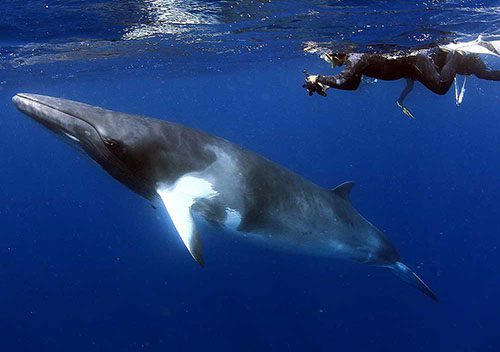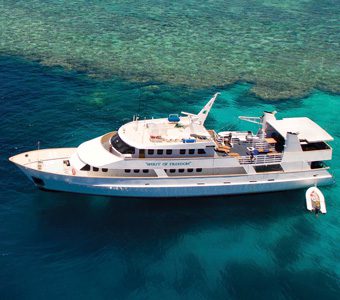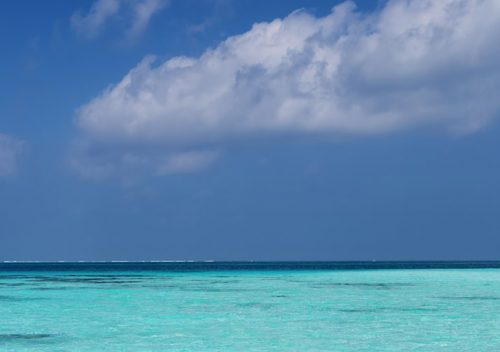When I arrived in Cairns recently to jump on Spirit of Freedom, the weather was far from ideal, with a tropical low weather system moving slowly from the Gulf of Carpentaria to the Coral Sea. I half expected the trip to be cancelled, but our experienced skipper Tony Hazel, who has been skippering dive boats on the Great Barrier Reef for decades, devised a route north that avoided the predicted adverse weather – completely.
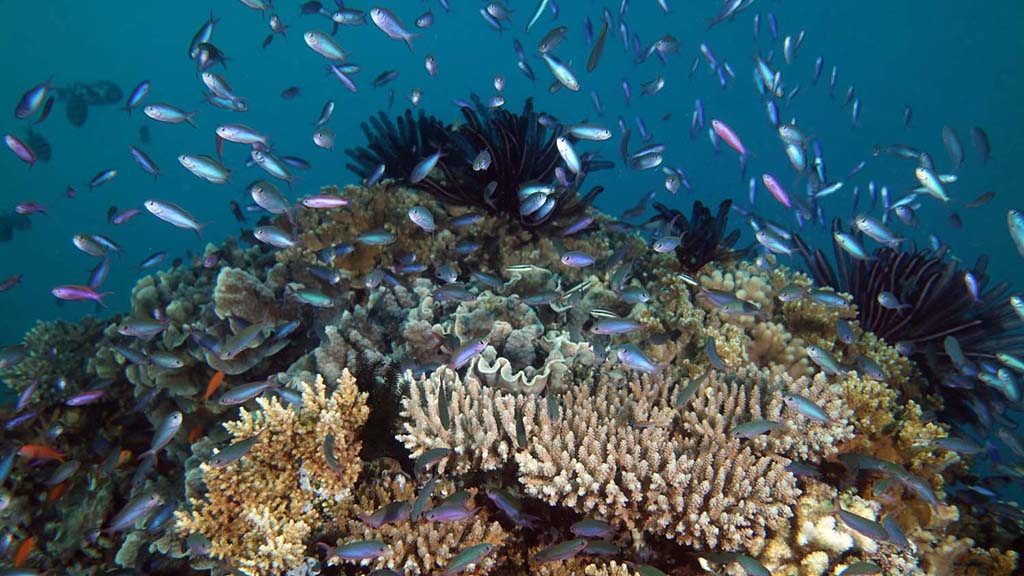
Tony appears to know all the Reef’s secrets and chooses a route north, hugging the coast, that provides smooth seas and glass-out days. We forgo the usual Day 1 checkout dives on the Agincourt Reefs, and head straight for Ribbon Reef 3, enjoying a glorious sunset along the way.

Flare Point to Challenger Bay
Our first dive is a cruisy swim through the very pretty coral gardens of Flare Point, through fields of blue, green and purple staghorn corals, huge boulder corals and bushy acropora. We pass butterfly fish, parrot fish, sweetlips, trumpet fish, a large grouper, Maori wrasse, giant clams and a sleepy white tip reef shark. Under the overhangs, gorgonian fans and clouds of glassfish.
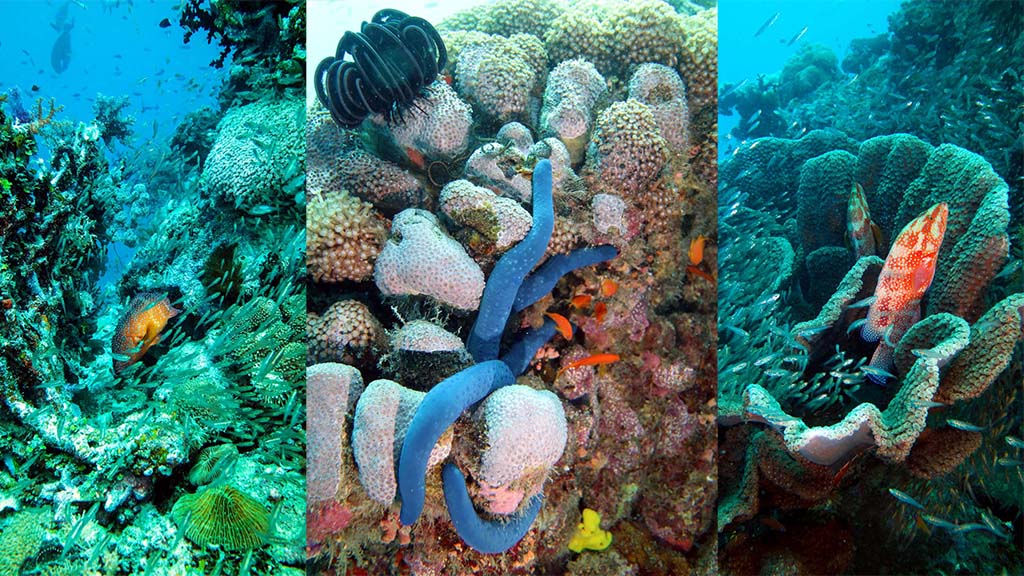
Dive number two is a cracker. Seriously. Cracka Jack is a tall pinnacle in the middle of the channel between Ribbon 4 and Ribbon 5, descending to the sea floor at around 30 metres. At around 25 to 30 metres, you’ll find huge gorgonian fans and bright red whip corals, while out in the blue, schools of fusiliers, Jacks and barracuda. In shallower water, from around 15 metres, you find yourself surrounded by colourful anthias, banner fish and damsels, while clouds of glass fish hug the reef, every now and then clearing to reveal lurking coral trout looking for lunch. In the nooks and crannies, we find mantis shrimp, pipefish and banded cleaner shrimp so I treat myself to a manicure.
Our third dive is the oddly named Google Gardens, shallow coral gardens with massive coral formations, large forests of staghorn coral, enormous boulder corals and fields of bushy corals, some with clouds of purple anthias and bright blue juvenile reef fish.
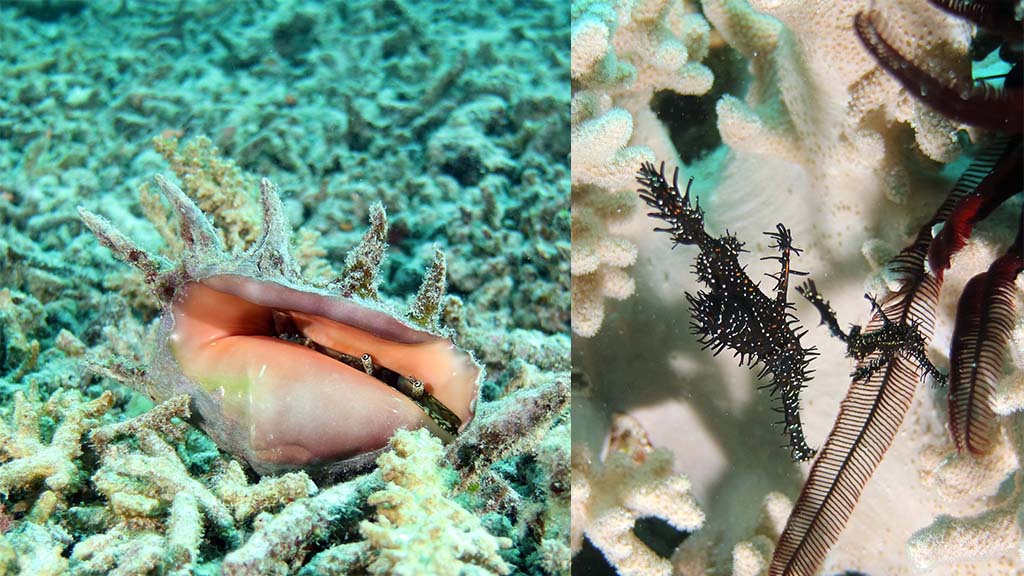
Challenger Bay is our base for the next two dives, a section of the Great Barrier Reef than suffered significant damage by Cyclone Nathan in 2016 but has now recovered remarkably, with lots of healthy coral outcrops scattered throughout the bay, teeming with colourful reef fish including Maori wrasse, sweetlips, titan trigger fish and the odd reef shark. I manage to find a few tiny critters as well, nudibranchs, hermit crabs, file fish, and Spirit of Freedom’s Master Reef Guide Michelle Barry finds us a true macro prize: a pair of ornate ghost pipe fish – a rare find. Challenger Bay at night is one of the Great Barrier Reef’s more exciting night dives, with plenty of shark action watching the resident white tip reef sharks hunting for dinner.

Pixie Pinnacle to Cod Hole and the Snake Pit
Pixie Pinnacle is possibly the highlight of this dive trip for me. I would happily dive this site many times over. It encapsulates everything I love about diving coral reefs; the vibrant colours and teeming marine life – my happy place. This tall pinnacle on Ribbon Reef 10 descends to around 30 metres. In deeper waters, there are enormous gorgonian fans, soft corals and dozens and dozens of crinoids. Michelle manages to find a leafy scorpion fish for us before we spiral the pinnacle to shallower depths. The shallower parts of this pinnacle are even prettier. We’re surrounded by clouds of orange and purple anthias, bright yellow damsels, glass fish, coral trout and anemones.
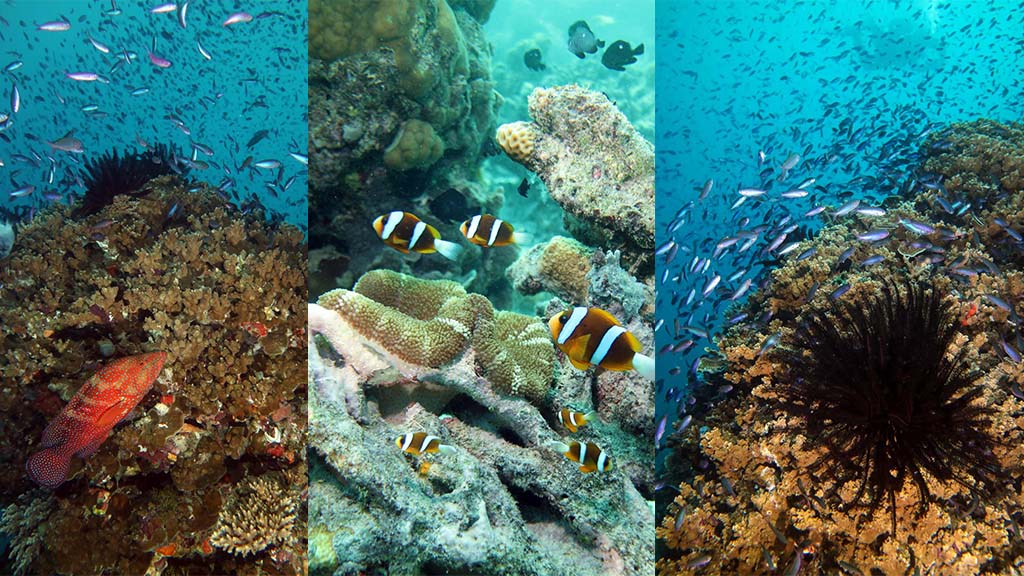
Our next two dives are at Cod Hole. The first, a little meander through this site where giant gropers aggregate, where we find plenty of friendly (enormous) potato cods, a few white tip reef sharks and a rather shy grey reef shark as well as countless other reef fish and the odd moray eel hiding under a rock. For the she second dive, our Master Reef Guide Michelle Barry has prepared a few Scooby snacks for the dominant resident potato cod: Spot.

Dive boats have been visiting this site for many years, so the potato cods are completely unfazed by human interaction, and in fact Spot responds to simple hand gestures in the same way a dog would for a few snacks. It makes for e few great photo opportunities with these gentle giants.
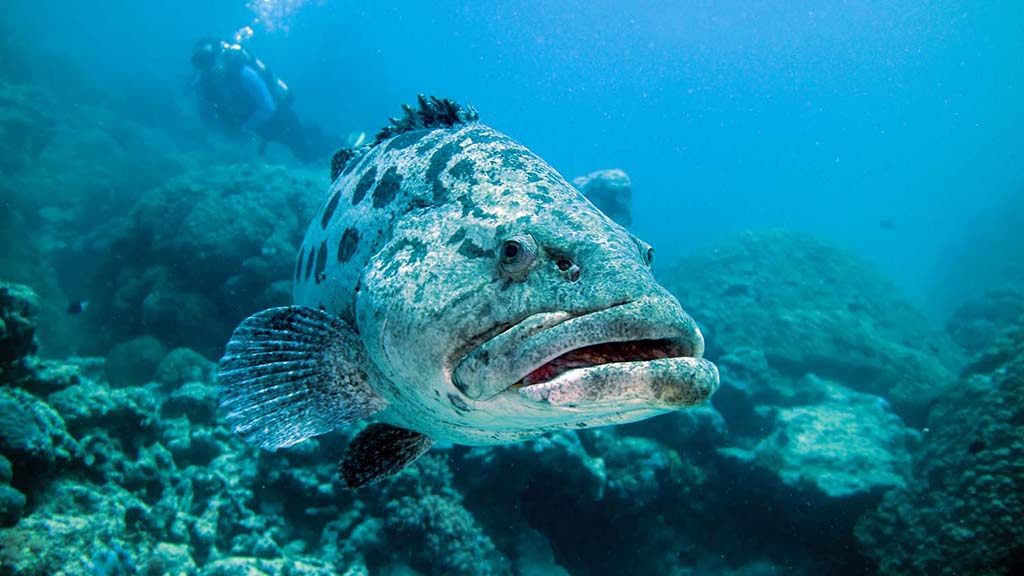
Snake Pit is our destination for an afternoon and night dive. So-called I expect because someone found a few olive sea snakes here, but when briefed, we’re told to expect “anything really”. Normally sleepy turtles resting in the coral gardens on the plateau, eagle rays, mantas and reef sharks gliding by and in the nooks and crannies, morays, mantis shrimps, flat worms and nudibranchs. We do in fact spot most of these creatures, with the highlights for me being buzzed by a beautiful spotted eagle ray and almost headbutting a green turtle.
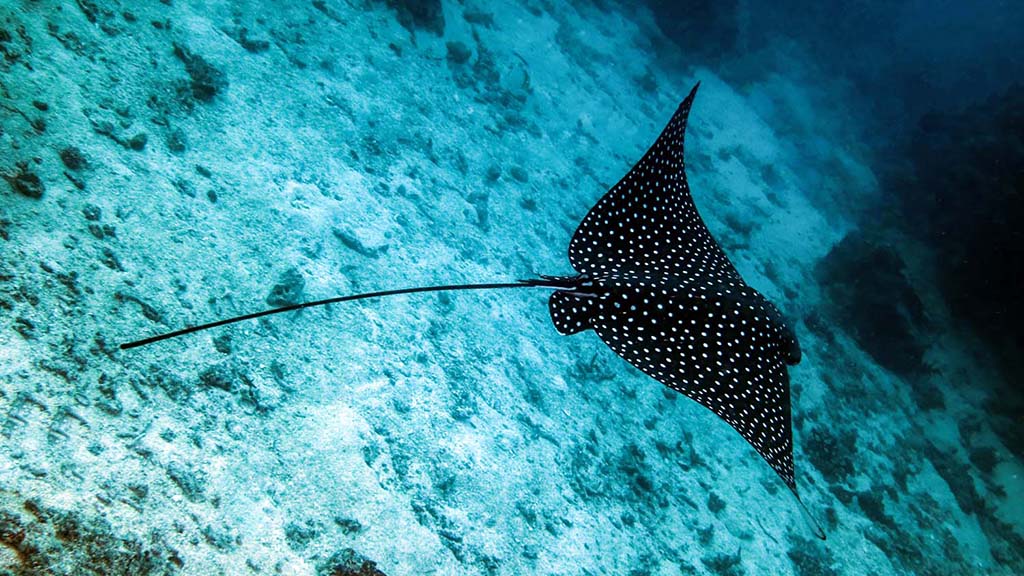
This slightly adapted three-day itinerary was a great demonstration of how flexible an experienced crew can be in the face of challenging weather, finding us the best dive sites (as promised) according to the prevailing conditions, while the experienced dive guides find us all the best critters.

